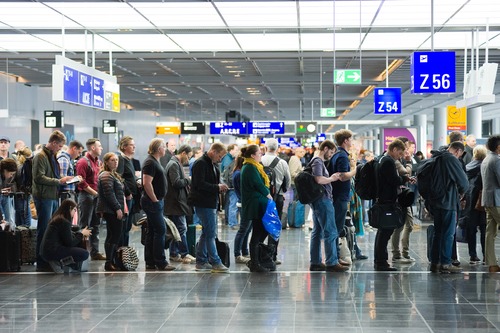
The number of airline passengers globally reflected strong growth for the second straight month in February, despite uncertainty created by the Trump Administration’s imposition of two travel bans for citizens from six largely Muslim countries.
Adjusting for the one fewer day in February this year, the underlying growth rate in total revenue passenger kilometers, which measures actual passenger traffic, rose an estimated 8.6 percent, just under January’s increase of 8.9 percent, according to data from the International Air Transport Association (IATA).
Capacity also rose 2.7 percent when compared to February 2016, while the average ticket price fell by more than 10 percent when adjusted for inflation.
Domestic and international travel both increased, 3.3 percent and 5.8 percent, respectively.
“The strong demand momentum from January has continued, supported by lower fares and a healthier economic backdrop,” Alexandre de Juniac, IATA director general and CEO, said. “Although we remain concerned over the impact of any travel restrictions or closing of borders, we have not seen the attempted U.S. ban on travel from six countries translate into an identifiable trend. Overall travel demand continues to grow at a robust rate.”
Trump’s attempts at restricting travel from the six countries have been blocked by federal courts, pending reviews.
Growth was witnessed in all regional markets. Asia-Pacific has the largest percentage of passengers, 32.9 percent, followed by Europe at 26.4 percent. The region with the smallest passenger traffic is Africa.
The North American market relies on domestic travel more heavily than other areas. In North America, 66 percent of flights were domestic. This compares to the Middle East, where only 4 percent of flights were domestic.
The world’s fastest growing markets are China, India and Russia.